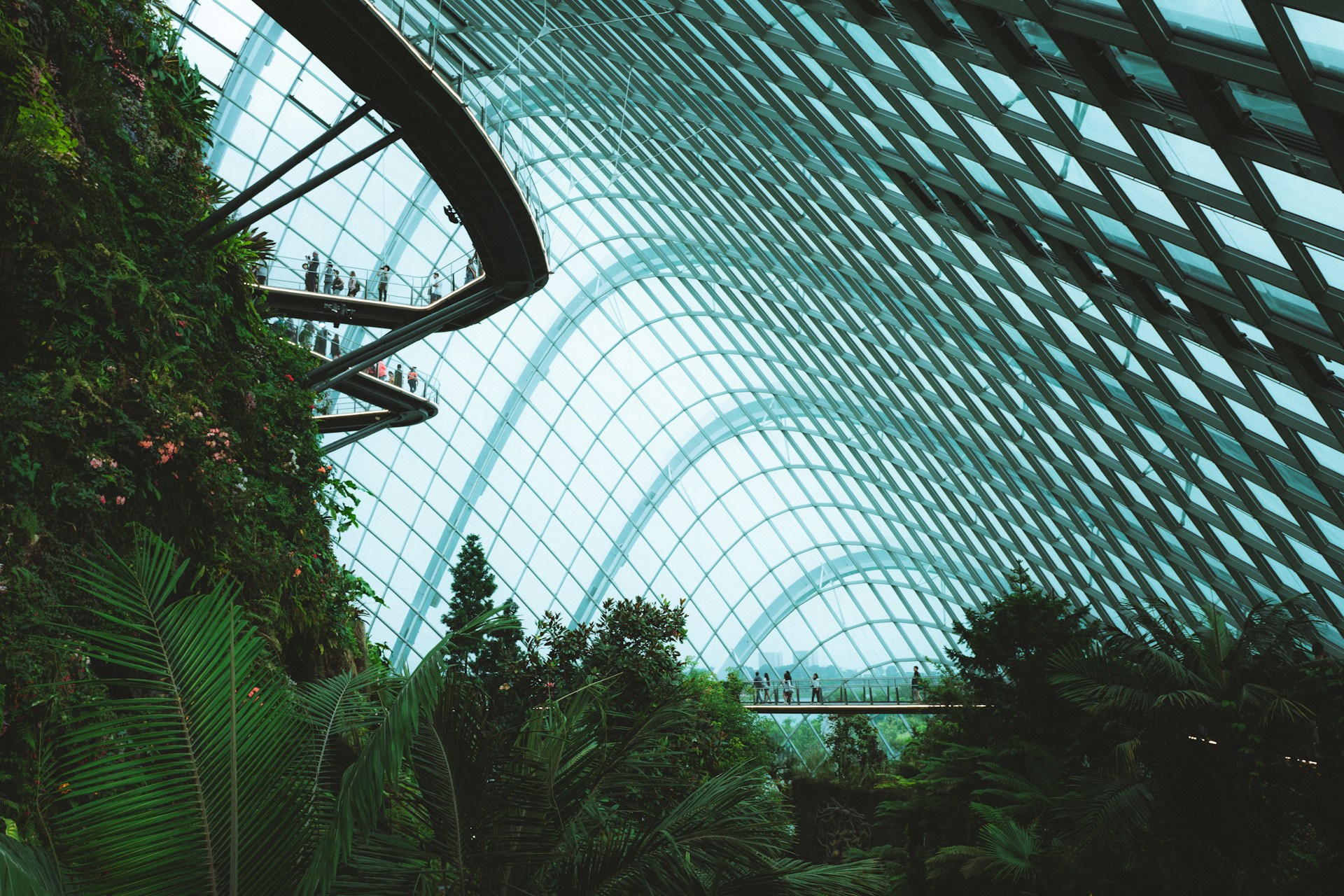If you want your client’s growing season to be extended let them think about commercial hoop house kits, row covers, and others. An unheated greenhouse can also extend growing seasons in either direction.
These handy enclosures are used by gardeners to harden off indoor-grown seedlings and plant them earlier in spring. In fact in some climates cold frames and hoop walk-in greenhouse allow gardeners to enjoy cool-weather crops all winter long.
With all the hard work, you already did upfront, let’s keep your customer’s plants going strong! Learn more.
Ways to Protect Plants from Colder Weather
Here are some ways your customers can protect their plants from tough weather:
1. Cold Frames
Cold frames retain heat and protect plants from the wind which means that they can be used to extend the growing season by a couple of weeks.
Try growing lettuce and other salad leaves in the cold frames. Or your clients can use them as protection to overwintering plants that take longer to mature.
Cold Frames can be brought as ready-made structures constructed from timber and plastic. Your customer can create their own by covering a wooden frame with a solid sheet of plastic or glass.
The sheets have a door on top that can be closed or raised open at different levels.
2. Hoop Houses Or High Tunnels
Also called high tunnels, commercial hoop house kits create an effective microclimate to provide several weeks of extra protection.
Inner side of a hoop house vegetable beds are usually dug on either side of a central path. The ends of a hoop house can be shut during cold weather and opened during sunny days for ventilation.
They are extremely tall, strong and expensive. High tunnels offer more range to cover than the average gardener usually needs.
3. Row Covers
Row covers are transparent protective structures most are made from heavy plastic or polyethylene sheets held up with meta hoops.
As well as being more cost effective than cold frames, they are often easier to move to where your plants are situated. The lightweight garden fabric used alone as a plant cover without using wire hoops for support is called a floating row cover.
Row covers come in different shapes, sizes and materials. So it is worth doing some research and deciding on the type that best suits your client’s garden.
4. Horticulture Fleece
This can be spread over crops to protect them from the worst of frost and make it easier to remove now. These covers are made from fabrics like
- Thin
- Nonwoven
- Porous
- Polypropylene
These fabrics have the added advantage of letting some moisture through. So there is less of a requirement to remove them and water the crops underneath.
They are easy to set up and are lightweight so they float on top of crops. They need to be tied down firmly to be kept from being lifted by the wind. They won’t give you as much shielding as other covers.
5. Traditional Greenhouse
Greenhouses are a bigger investment constructed from glass or polycarbonate windows. In most areas, an unheated greenhouse will extend the growing season up to 4 weeks and a heated one can lighten it up to 8 weeks.
Be aware that heating a walk-in greenhouse comes with considerable added cost. Your customer also will need to keep a close eye on when frost is forecast in order for this to be effective.
6. Cover Your Plans with Cloches
Cloches are generally made of glass or rigid plastic. They work like creating a mini-greenhouse environment around an entire plant.
The warmth gets confined inside and prevents frost particles from touching and damaging plant tissue.
These bell-shaped covers are a very effective frost protection measure. But they take up a lot of space and can be quite costly. They are best for covering tender young transplants in the springs.
7. Bubble Wrap
Just like horticultural fleece bubble wrap that has been repurposed from packaging materials can be layered over plants. This is to protect the plants from the frost.
The bubbles trap the air so it makes a great insulator. Also, you can use bubble wrap to insulate windows in unheated greenhouses or structures.
8. Garden Bed Hoop House
This equipment brings huge benefits to the garden and can be built into existing raised garden beds. This equipment uses flexible support like PVC pipe and thick plastic or garden fabric.
These are so handy that your customer can attach these hoops to most of their garden beds long before.
Wrapping Up
Frost or harsh environments can cause irreparable damage to annuals and tender plant issues like blossoms. But methods like covering plants using different methods like commercial hoop house kits or walk-in greenhouses can help your customers protect vulnerable plants from light and hard frost.
You can love vegetables or flowers, hoops etc having the types of equipment mentioned above your customer can plant and harvest later than you may have thought possible.




